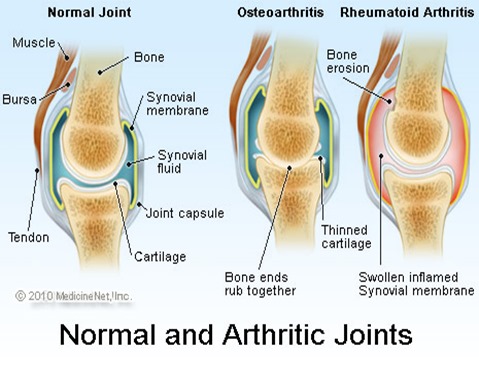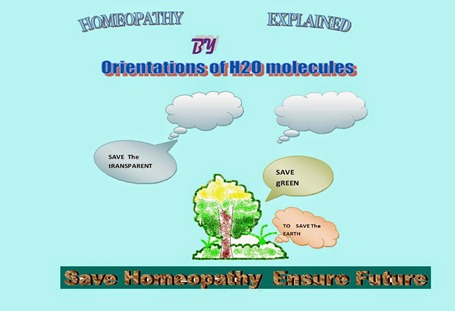Source of Original article : http://www.interhomeopathy.org/homeopathic-approach-to-catastrophe-and-radiations-problems-fukushima-japan
The Tohoku earthquake and the subsequent tsunami, which occurred off the Sanriku coast of Japan at 14:46 JST on Friday 11 March 2011, caused enormous devastation, mainly in eastern Japan, earning the name: the Great East Japan Earthquake. I am writing this article, in which I will briefly present the JPHMA’s activities, as well as my view on the meaning of this catastrophe, just one month after it happened.

According to the Japan Metropolitan Police Department’s statistics, on 30 April 2011, the figures are as follows:
Deathtoll 14,662; Missing 11,019; Injured 4,373 among 12 districts including Fukushima, Gunma, Igaraki, Tochigi, Miyagi, Yamagata, Niigata, Yamanashi, Nagano, Saitama, Tokyo and Chiba. 2.500 shelters have been built in 18 districts, caring for 127,000 evacuees. 48.564 buildings have completely collapsed, spread over 9 districts.
The shock of this catastrophe is as vivid today as if it had just happened yesterday.
On the day of the earthquake, I wanted to go straight to the affected area, but as I had already been booked for lectures in western Japan and as there was no access to the east nor electricity in the zone, I had to postpone my trip. Initially, I could only offer remote support via text messages to mobile phones. JPHMA members in the affected areas had home kits of 36 homeopathic remedies and contributed outstandingly by distributing homeopathic remedies to their neighbours; many of them are indicated for the kind of physical and mental trauma caused by such a disaster but none of them were appropriate for treating exposure to radiation. The fact that JPHMA had given homoeopathic self-care lectures to the general public on a routine basis became a great advantage.
Another unexpected situation occurred, however, at the Fukushima 1 Nuclear Power Plant. In 1971, General Electric Mark I nuclear reactors were introduced and have been working for nearly 40 years. The earthquake and tsunami disabled the reactor cooling systems, leading to nuclear radiation leaks due to a partial melt of fuel rods.
At the time of the earthquake, there were 54 active nuclear power plants in Japan, which would have totalled 77 if inactive and newly planned ones were included. The fact that such a large number of nuclear power plants should be built in Japan, a country of earthquakes, is equal to pouring gasoline on a fire!
Luckily there was not a complete meltdown, as in the Chernobyl nuclear accident on 26 April 1986. In Chernobyl, the reactor exploded and melted, sending huge amounts of radioactive fallout into the atmosphere. In Fukushima, the leakage is one tenth that of Chernobyl.
Nevertheless, some international media have reported incorrectly that the whole reactor had exploded, releasing an atomic cloud, making Japan an extremely dangerous place to visit. The press used pictures of Hiroshima after the atomic bomb on 6 August 1945, next to pictures of land destroyed by the 11 March tsunami, implying incorrectly that the land was damaged by the nuclear power plant incident rather than by the tsunami. Products from Japan could not be exported and, even Japanese people started to avoid products from Fukushima. When I visited Fukushima, where vegetables and fruits are produced, people there were deeply depressed. A farmer in Fukushima had committed suicide because he could not sell his produce, which was about to be shipped out.
Let us consider the Arndt-Schulz law, one of the major principles of homoeopathy. According to this law, if we are exposed to a large amount of radiation, a small amount of the radiation could cure the ailments due to the exposure. If it is the exposure is minimal, our own healing power should be able to reverse the damage.
I have created a radiation remedy ‘RA’ to heal the effects of radioactive substances. It is a combination of Cadmium sulphuricum, Sol, Plutonium nitricum, Kalium iodatum, Radium bromide, Uranium nitricum, Caesium hydroxide, Thyreoidinum, and Parathyreoid gland. Caesium 137 was carried to neighbouring European countries after the explosion in Chernobyl, but people who were not exposed to great density of radioactive rain seemed not to be affected.
After all, huge amounts of radioactivity have been spread by more than 2,000 nuclear experiments all over the world. Therefore, we do not have to worry about radiation out of hand. On a daily basis, we should try to avoid any intake of harmful substances and use a treatment like homeopathy to stimulate our own healing powers and push toxins out of our bodies. Radioactivity is not the only dangerous pollutant we encounter: substances in vaccines, drugs, pesticides, and food additives are also harmful. I think this nuclear incident has demonstrated the necessity to replace harmful energy, medicine, and foods with healthy ones, derived from nature.
From the time of the earthquake to my visit to the affected area
Immediately after the earthquake, on 11 March, I contacted the Institute of Homoeopathy in Japan and started to distribute the remedies I had created: ‘RA’, as mentioned above, and ‘AAA’ (Aconite, Arnica, and Arsenicum), free of charge. I also offered information to the public through our website and by email.
On 18 March, a JPHMA rescue team, in conjunction with Homoeopathy Japan Co, set off for Fukushima and Miyagi with these remedies and relief supplies. As the motorway was closed, it took 12 hours to get there and 9 hours to come back, which is about three times longer than it would usually take.
I had already planned to give a lecture in Sendai city, in Miyagi, on 2 April before the disaster occurred, so I added visits to Fukushima on 1 April and Iwate on 3 April, where I provided RA and AAA remedies to about 400 of our members and to the general public. I gave free lectures to explain to people how to use homeopathic remedies in time of disasters.
To read the full details of the reports, please visit the JPHMA website: www.jphma.org/en/index.html
These reports are the result of my own experience in the affected areas and are quite different from the reports that can be seen in newspapers and other media.

The effect of the RA remedies and AAA remedies
We are currently analyzing responses to questionnaires after using these remedies.
The below chart is the result so far, as of 30 April 2011.
Summary
1. I sent ‘remedies’ of encouragement through text messages: “We are supporting you.” “You are not alone.”
2. We took action: JPHMA provided homoeopathic remedies free of charge with the cooperation of Homeopathy Japan Co. The College of Holistic Homoeopathy provided free advice by telephone.
3. JPHMA organised a rescue team, which immediately delivered homoeopathic remedies and relief supplies.
4. JPHMA held free seminars on how to deal with disasters and provide emotional care, with cooperation from local JPHMA members.
5. After the seminars, local JPHMA members provided free homoeopathic consultations.
6. JPMHA collected approximately 4,500.000 Japanese yen, which were donated to affected prefectures and areas in need.
We helped and encouraged each other, which created a strong bond between us and a feeling of unity. JPHMA members seemed to be getting over this disaster more quickly than the general public, probably because they had been taking homoeopathic remedies on a daily basis.
The real meaning of the earthquake and of the radiation leak this time
Samuel Hahnemann said:
“Nations like the Germans, who have for centuries been gradually sinking deeper and deeper in soulless apathy and degrading serfdom, must first be trodden still deeper in the dust by the Western Conqueror, Napoleon, until their situation became intolerable; their mean opinion of themselves was thereby over-strained and removed; they again became alive to their dignity as men, and then, for the first time, they raised their heads as Germans.” (Quoted from Organon 6)
Japan is reaching a turning point. Japanese people have been deprived of patriotic spirit and pride in their own heritage, from the fear of atomic bombs and a sense of guilt after the war. Ancient Japanese spirituality and wisdom, which live in harmony with nature, have been forgotten. Japanese people now deny nature’s healing power and dependency on unnatural energy, medicines, vaccines, and agro-chemicals has been encouraged. The lives of humans, animals, plants, and insects are suffering, as are the land, water, and air; Japan is now facing the risk of national ruin.
It could be said that the reality of this catastrophe is that it is a mirror of Japanese people’s mind. We hope that this devastating experience will become an opportunity for change, so that this suffering would not have been in vain. The real recovery for Japanese people would be to overcome their fear of radiation, to regain their natural healing power and their ancient wisdom of living in harmony with nature. Japan, as the site of a previous disaster with the bombings of Hiroshima and Nagasaki, can be a beacon of hope for the world by showing that it is possible for a country facing the most extreme circumstances to recover and thrive once again. Homeopathy lies at the heart of this recovery and we, at JPHMA, will all do as much as we can to bring it into reality.

I would like to take this opportunity to express my gratitude to everyone again: Interhomeopathy’s editors, Narayana Verlag, the people who visited Interhomeopathy’s Facebook and many other homeopathic colleagues around the world, who sent warm, encouraging messages and donations to JPHMA and me.
JPHMA Homoeopathy International Charity Conference, 8 – 10 October 2011.
Details and updated information from: www.jphma.org/congress2011/en/index.html
We would like to welcome you to witness the activities of Japanese homoeopaths and support them by attending this conference. I and all JPHMA members look forward to meeting you in Japan!
Be grateful for all of creation, the existence of the universe itself.
We wish you all to enjoy the gift of life!
Categories: Cases
Keywords: natural disaster, nuclear disaster, radiation, depression, guilt, loss of heritage and national pride
Remedies: Aconitinum, Arnica montana, Arsenicum album, Cadmium sulphuratum, Caesium hydroxide, Kalium iodatum, Parathyreoid gland, Plutonium nitricum, Radium bromatum, Sol, Thyreoidinum, Uranium nitricum
पसंद करें लोड हो रहा है...












You must be logged in to post a comment.